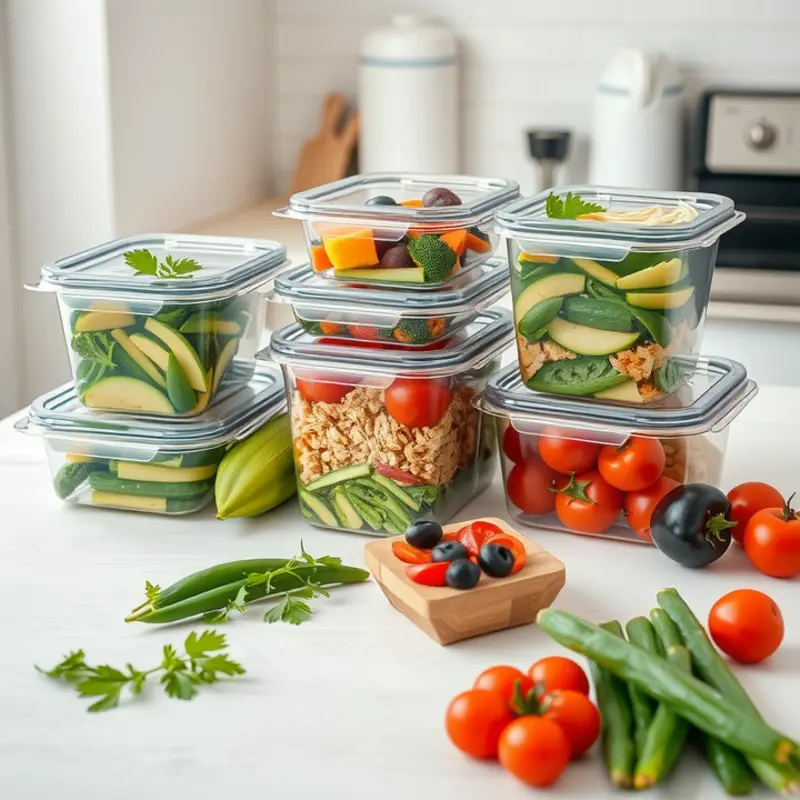Meal prepping can be a lifesaver for busy individuals and families navigating dietary restrictions. By organizing meals in advance, you can save time, reduce stress, and ensure that every bite is nutritious and suitable for everyone. This guide shares practical meal planning techniques tailored to specific dietary needs, helping you easily adopt a smoother cooking routine that aligns with your lifestyle.
Understanding Dietary Needs: A Customized Approach

Navigating the world of dietary restrictions can seem complex at first, but understanding key fundamentals will help demystify the process. Dietary needs often arise from allergies, food intolerances, or lifestyle choices. Each type of restriction has specific requirements that impact meal planning and preparation.
Allergies are the body’s immune response to certain foods and can result in severe reactions. Identifying these allergies early, such as those to nuts, shellfish, or eggs, is crucial for creating safe meal plans. Food intolerances, like lactose intolerance, are less severe but can cause discomfort. In these cases, it’s vital to substitute ingredients with suitable alternatives.
Lifestyle-based dietary choices, including vegetarian or vegan diets, stem from ethical or health motivations. Similarly, diets like gluten-free or dairy-free are often adopted due to health reasons or personal preference. Each of these choices requires a keen understanding of permissible ingredients.
To address these needs, tailor your meal prep by employing a customized approach. Begin by having open discussions with family members about their dietary restrictions and preferences. Establishing clear communication can guide your planning process more effectively. Additionally, consulting with a nutritionist can provide professional insights, helping refine your meal strategies.
When preparing meals, select versatile ingredients that align with multiple dietary requirements. For instance, quinoa is a gluten-free, high-protein option suitable for both vegans and those with gluten sensitivities. Incorporating a variety of fruits and vegetables caters to most diets, providing essential nutrients and enhancing meal diversity.
Reading food labels meticulously is another critical step. Labels provide valuable information about potential allergens and ingredient sources, allowing you to make informed choices. Opt for products with clear, simple ingredient lists to minimize risk.
Utilize ingredient substitutions to create meals that satisfy everyone’s needs without compromising flavor. For example, swap wheat pasta for gluten-free alternatives or use plant-based milk instead of dairy. Consider exploring guides on ingredient substitutions, like non-dairy probiotics, to expand your culinary options.
Batch-cooking is also an excellent strategy to streamline meal prep. Prepare large quantities of ingredients, then adapt them into various dishes throughout the week. This technique saves time and ensures that dietary preferences are consistently met.
Ultimately, remaining flexible and proactive in understanding and addressing dietary needs builds a supportive environment for everyone. By focusing on inclusivity and personalizing meals, you enhance the dining experience, ensuring it is enjoyable and nourishing for all family members.
Practical Meal Prep Techniques for Busy Schedules

For busy families, meal prep can be streamlined using several effective strategies. Batch cooking is one of the most practical approaches. By dedicating a few hours on the weekend, you can prepare large quantities of staples like grains, proteins, and vegetables. These can be seasoned differently to create variety throughout the week. Using versatile ingredients, such as rice, quinoa, or legumes, allows them to be transformed into several dishes, accommodating various dietary needs.
Quick recipes can be a lifesaver. Preparing meals that require minimal ingredients not only saves time but also simplifies the balancing act of managing dietary restrictions. For instance, a simple vegetable stir-fry or a hearty soup can be customized easily—just swap soy sauce with coconut aminos for soy-free diets or add tofu for a protein boost in a vegetarian meal.
Dividing food into ready-to-eat portions ensures convenience during the week. Use containers of different sizes to store individual servings, which helps both with portion control and reducing food waste. More about safer storage of sauces can help ensure freshness and safety for the prepped meals.
Storage is equally important. Label containers with the meal type and the preparation date. This avoids the guessing game of what food is in each container, which is especially handy when schedules are packed. Ensuring airtight closures and using freezer-ready containers extends the shelf life of your meals.
Slow cookers and instant pots are phenomenal for easy cooking. Recipes can be adapted to these tools, allowing you to set meals in the morning and have them ready by dinner. Think of these devices as a set-and-forget option that requires minimal monitoring.
Involving children in meal prep is not only fun but educational. Children can help with washing veggies, measuring ingredients, or organizing pantry items. These activities cultivate a sense of responsibility and encourage them to make healthier food choices. The hands-on experience makes the kitchen a welcoming place for kids to learn and enjoy.
By incorporating these techniques, meal prep not only becomes manageable but also a family affair, promoting well-being and nutritional awareness. Simplifying this process means less stress and more time for families to connect, ensuring that everyone, regardless of their dietary needs, can enjoy meals together.
Final words
Adopting meal prep can greatly ease the challenge of cooking for specific dietary restrictions while fitting into a busy lifestyle. By understanding your family’s nutritional needs and implementing practical cooking techniques, you can create a positive and stress-free meal routine. Remember, flexibility is key—experiment with different ingredients and recipes while inviting family members to partake in the preparation process. This not only enhances taste but also strengthens family bonds. Start small, remain mindful of everyone’s preferences, and watch as your meal prep transforms into a delightful experience.







